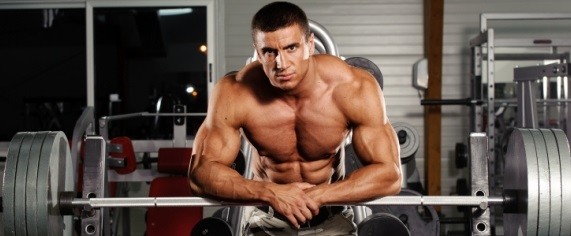
The food you eat provide you the energy necessary to perform your workout properly. But good nutrition plays also a big role in muscle toning and recovery after a workout.
This nutrition plan will contain all the meals necessary to get your dream body!
Calories Are What Matters The Most In A Nutrition Plan
Whether you want to get toned, lose fat or maintain your weight, nutrition will play a big role during this process! Your nutrition is what fuels your body with food, which is measured in calories.
You caloric consumption will determine what kind of body you will obtain:
Get Toned: Toning your muscles means; building lean muscle mass progressively without getting too much fat. In order to do so, you will have to eat more calories than you burn, often called: caloric surplus. If you increase your calories too quickly, your body will store fat. This why it's important to do it progressively, so you can track your progress and avoid looking bulky.
Maintain Weight: This is when you burn as many calories as you consume, often called: calorie maintenance. Knowing the caloric intake you need in order to maintain your weight is the starting point. From there, you can determine how you would have to eat in order to tone your body or lose fat. Use this calorie calculator!
Lose Fat: If you want to lose fat, you will have to burn more calories than you consume, often called: caloric deficit. It's when your body uses fat stores for energy, which leads to weight loss. Be aware, the body can also use muscle tissue; which is bad. This is why you must lose fat progressively, if you're doing it too quickly you will kill your health and most certainly give up.
Explanations Of Macronutrients Ratio
Macronutrients are nutrients that our body needs in large amount: Carbohydrate, Protein and Fat. It's important to define the right macronutrient ratio according to your fitness goal; whether you want to tone your body or lose fat.
In short words, this ratio will depend on:
Your Fitness Goal: If you want to burn fat, you won't have the same macronutrient ratio that someone who wants to tone up.
Your Body Type: Some people tend to gain more weight than other. They should consume less carbohydrates and fats than the ones having a hard time toning up.
Your Gender: Women are generally more efficient at burning fat and would often consume less carbohydrates than men.
Macronutrients Ratio According To Your Fitness Goals
During this women's nutrition plan we will define a general macronutrient ratio for each fitness goal: toning, burning fat and maintaining weight. Like said earlier, we all have different body types, so it will be your job to slightly change this ratio if your body doesn't respond to it.
The macronutrient ratios are:
Muscle Toning: Carbohydrate 40% - Protein 40% - Fat 20%
Maintain Weight: Carbohydrate 35% - Protein 35% - Fat 30%
Burn Fat: Carbohydrate 30% - Protein 40% - Fat 30%
There Is Good Fat In This Nutrition Plan
"I want to lose fat, shouldn't I avoid eating fat?". This is good question, in fact there is several type of fats. Some are bad and others are required by your body. I recommend you to read this article: good fat versus bad fat.
Eating Healthy Is Not The Key Factor To Good Nutrition
"Eat fruits, vegetables and drink water and everything will be all right". This is what you read in magazines or on the internet. However, that sentence is not completely true. These days, eating healthy means consuming foods low in fat and high in micronutrients; vitamins and minerals.
Indeed foods with vitamins make you have a better health. However, you can eat all the healthy food of the world, but if you don't hit your daily macronutrient; you won't get the results you want. Does it make sense?
In short words; calories are calories. If you want to achieve your fitness goals you will have to first worry about your macronutrients, whether it's with "healthy food" or not. It's pure science!
The More Often You Eat, The Better You Will Feel
We all know that person that tried every diet that exists on earth and always give up because it's too hard. Nowadays, diets are all about food restrictions so you feel guilty if you eat one more rice grain than indicated. But again, what is really important there is your ability to hit your daily macronutrient.
Whether you want to lose some weight or tone your body, we will aim for 3 main meals and 1-2 snacks. However, if you can attain your calories in less meals, feel free to do it.
Why? Because eating every 3-4 hours will allow you to never feel hungry, which will help you to stop craving junk food.
This women's nutrition plan will be an example, so you can organize it according to your schedule. It's very important to eat something between your main meals and once again hit your macronutrients!
Daily Calorie Intake For Women
You calorie intake depends on your age, height, gender and how often you exercise weekly. I recommend you to try a calorie calculator.
For a healthy woman with a balanced diet, who is moderately active it's recommended to eat between 1800 and 2200 calories. We will start with these numbers.
Converting Percentage To Grams
It's very easy to calcule how many grams you should have for each macronutrient.
First you need to know how many calories contain each macronutrient :
Carbohydrate: 4 Calories per gram
Protein: 4 Calories per gram
Fats: 9 Calories per gram
Then, let's take 2200 calories as an example and our macronutrient ratio for maintaining weight:
35% Carbohydrate -> 2200 x 0.35 / 4 = 192.5g
35% Protein -> 2200 x 0.35 / 4 = 192.5g
30% Fat -> 2200 x 0.3 / 9 = 73.3g
Reference: http://tinyurl.com/gwedgk4

